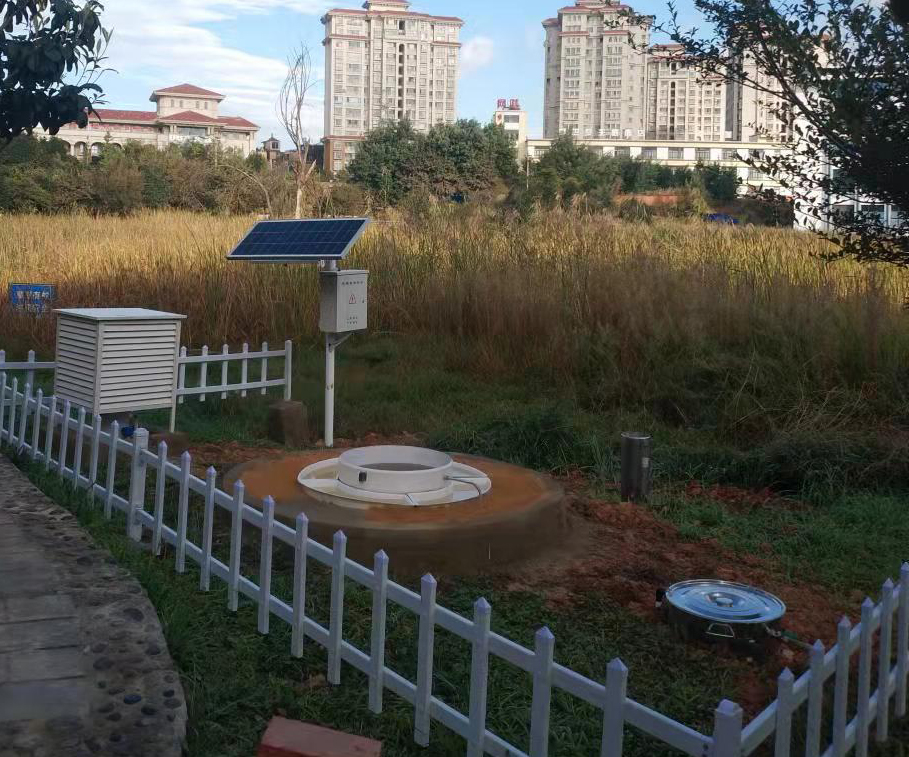

— Blogs —
—Products—
 Consumer hotline +8618073152920
Consumer hotline +8618073152920 WhatsApp:+8615367865107
Address:Room 102, District D, Houhu Industrial Park, Yuelu District, Changsha City, Hunan Province, China
Product knowledge
Time:2024-08-31 17:10:29 Popularity:1194
There are several instruments that can be used to measure evaporation, each with its own method of measurement. The following are some of the common instruments used for this purpose:
1. Evaporation pot: This is one of the most traditional methods. An evaporation pot is a shallow, open container filled with water. The amount of water lost from the pot over a specific period of time is measured and is considered to be the rate of evaporation for that period.
2. Atmospheric erosion bag: This is a bag made of a permeable material that is filled with water and left in the environment. The loss of water weight over time is measured to determine the rate of evaporation.
3. Evapotranspiration Meter or Evapotranspiration Meter: This is a device that directly measures evaporation from the water surface. It can be based on different principles, such as changes in water level, changes in weight, or changes in the water content of the medium.
4. Dissolved seepage meter: Although primarily used to measure soil moisture evaporation, the dissolved seepage meter can also be used to estimate evaporation from a body of water by measuring the loss of water from the soil or sand-filled containers.
5. Energy balance instruments: These include instruments that measure various components of the energy balance of a water body (e.g., net radiation, heat flux, etc.) to estimate evaporation.
6. Microwave radiometers: These measure the water vapour content of the atmosphere and, when combined with other data, can be used to estimate evaporation rates.
7. spectroradiometers: these instruments measure the reflectance and light emission from the water surface and can be used to estimate evaporation rates by analysing the energy balance.
8. Load cell evaporation sensors: These sensors measure the weight loss of a container filled with water, which corresponds to the amount of water that evaporates.
9. Pressure sensor based evaporation sensors: These sensors measure the change in pressure inside a sealed container due to the drop in water level as the water evaporates.
Each instrument has its advantages and limitations and is selected according to the specific application, environmental conditions and accuracy requirements.
Measuring evaporation serves a variety of important roles, particularly in the fields of meteorology, water resource management, agriculture and environmental science. The following are some of the main roles of measuring evaporation:
1. Water resources management:
- Assessing water losses: Understanding evaporation from water bodies helps to assess water losses in reservoirs, lakes, and rivers, leading to better management of water resources.
- Optimising reservoir operations: Measuring evaporation makes it possible to predict changes in reservoir levels and optimise reservoir storage and release strategies.
- Irrigation management: In irrigated agriculture, measuring evapotranspiration helps to determine the water requirements of crops so that irrigation water can be allocated appropriately.
2. Agriculture:
- Crop water requirements: evapotranspiration data are used to estimate crop water requirements to guide irrigation scheduling.
- Crop growth modelling : Evaporation data is an important input parameter in crop growth modelling to simulate crop growth.
3. Meteorology:
- Climate research: Evaporation is an important component of the Earth's energy balance and water cycle, and measuring evaporation helps to understand and predict climate change.
- Weather forecasting: evaporation data helps to improve the accuracy of weather forecasts, especially in predicting precipitation and temperature.
4. Environmental science:
- Ecosystem studies: evaporation data are used to study water balance and ecological processes in ecosystems.
- Water quality management: Understanding evaporation rates can help predict changes in the concentration of chemicals and pollutants in water bodies.
5. Engineering design:
- Cooling tower design: In industrial cooling systems, evaporation measurements are critical for designing cooling towers and calculating cooling water demand.
- Water feature design: In the design of water features for parks and recreational facilities, evapotranspiration data helps determine water replenishment needs.
6. Scientific research:
- Hydrological cycle studies: Evaporation is a key part of the hydrological cycle, and measuring evaporation is important for understanding and modelling hydrological cycle processes.
- Earth system models: Evaporation data are used in Earth system models to simulate and predict global and regional hydrological and climatic conditions.

In summary, measuring evaporation is critical to understanding and managing water resources, supporting agricultural production, improving weather forecasting, protecting the environment, and facilitating scientific research.
Related recommendations
Sensors & Weather Stations Catalog
Agriculture Sensors and Weather Stations Catalog-NiuBoL.pdf
Weather Stations Catalog-NiuBoL.pdf
Related products
 Combined air temperature and relative humidity sensor
Combined air temperature and relative humidity sensor Soil Moisture Temperature sensor for irrigation
Soil Moisture Temperature sensor for irrigation Soil pH sensor RS485 soil Testing instrument soil ph meter for agriculture
Soil pH sensor RS485 soil Testing instrument soil ph meter for agriculture Wind Speed sensor Output Modbus/RS485/Analog/0-5V/4-20mA
Wind Speed sensor Output Modbus/RS485/Analog/0-5V/4-20mA Tipping bucket rain gauge for weather monitoring auto rainfall sensor RS485/Outdoor/stainless steel
Tipping bucket rain gauge for weather monitoring auto rainfall sensor RS485/Outdoor/stainless steel Pyranometer Solar Radiation Sensor 4-20mA/RS485
Pyranometer Solar Radiation Sensor 4-20mA/RS485
Screenshot, WhatsApp to identify the QR code
WhatsApp number:+8615367865107
(Click on WhatsApp to copy and add friends)